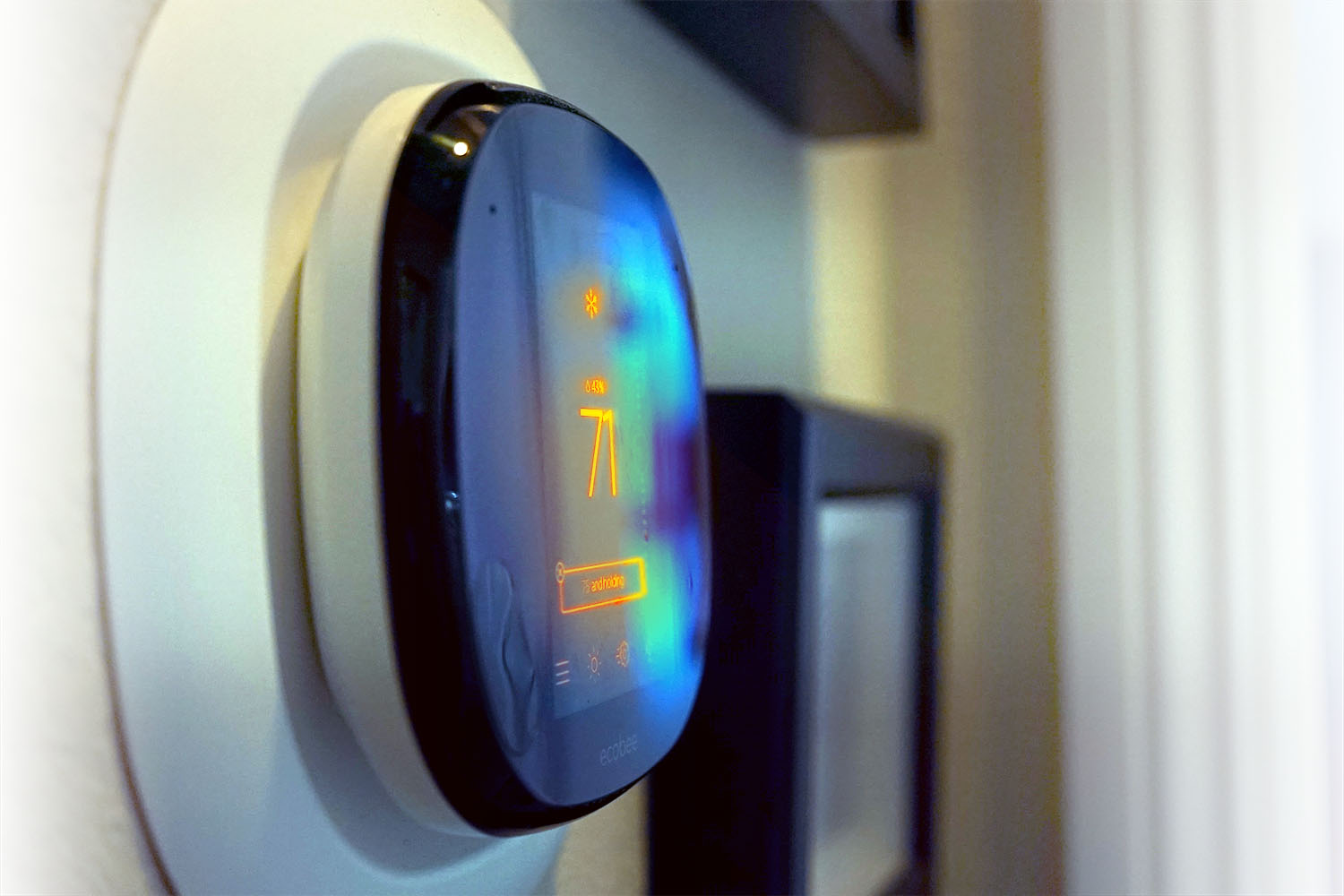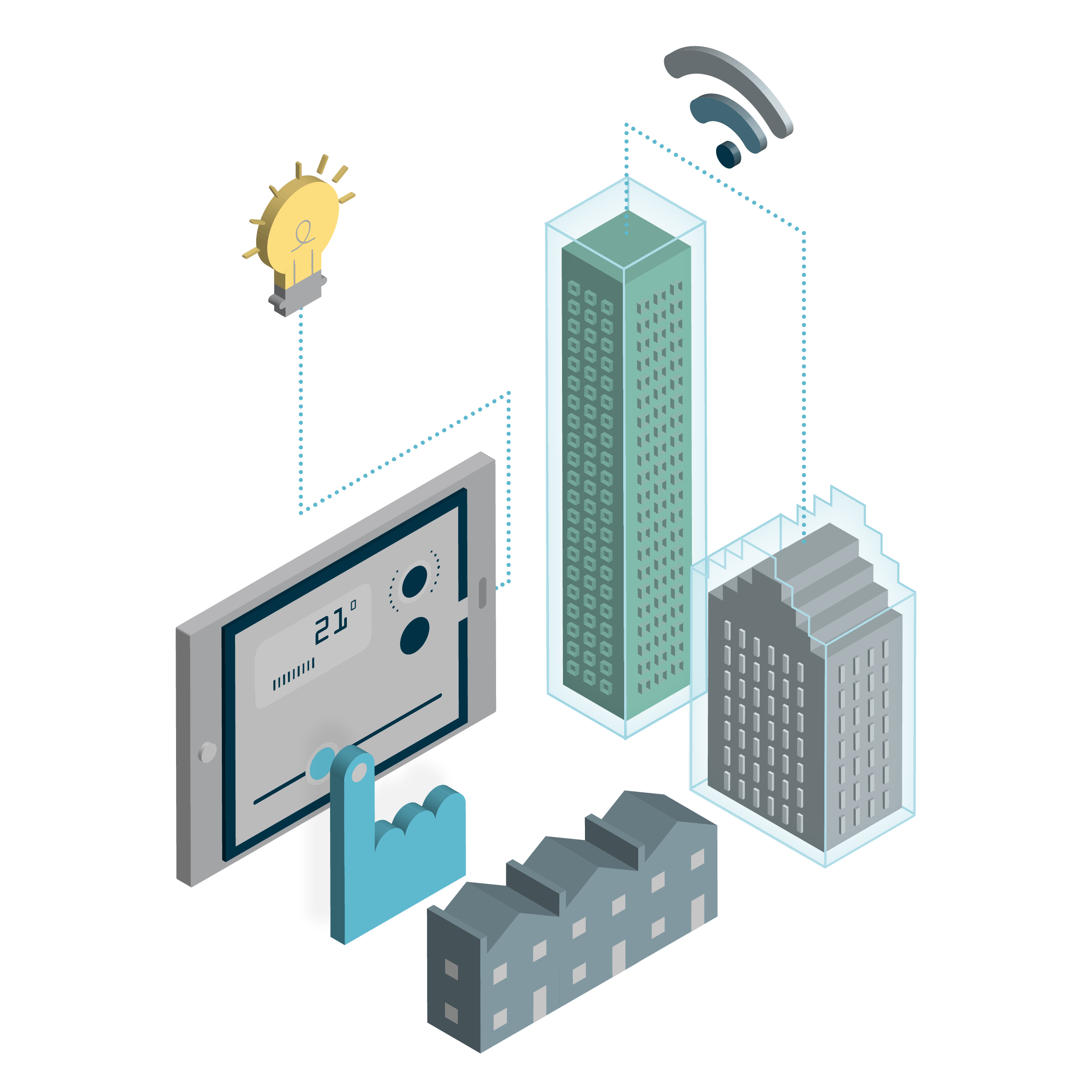How individual buildings can support the sustainability of an urban environment
Published on 21st April 2021
Our series on ways that individual buildings can boost the "smartness" of a smart city considers their role in decarbonisation and sustainability

The concept of a "smart" city encompasses not just its tech-enabled digital smartness but also sustainability and being green. As noted in our previous article in this series, it is essential that buildings are adaptable over time to accommodate new technology: the need to be environmentally responsible only emphasises that imperative.
Green tech is increasingly finding ways to improve the environmental impact of a building, but changes in materials and advances in environmental technology can be hard to predict. Demolishing and rebuilding on a plot creates a huge environmental deficit, so retrofitting to integrate green tech and better materials needs to be both possible and not excessively energy-intensive. Running an individual building on these principles can also contribute to wider benefits for the neighbouring community and wider urban environment.
Sustainable materials
The choice of materials for the original construction of the building, and any later refitting or refurbishment, can have a significant environmental impact. Modular construction is more flexible than traditional construction, even once built, and can also support the recycling and reuse of materials, with less waste, but remains less common than traditional construction methods.
As green technology and materials advance, so design is adapting to incorporate them. Some 25 years ago, the loadbearing capacity of a roof was typically not calculated to accommodate the weight of photovoltaic panels. Now, that is the norm and they will often be designed into the building from the outset, potentially with batteries in the basement to store excess solar power until needed. Meanwhile, building cladding is now being designed to absorb energy and contribute to warming the interior. In the future, centralised city heating systems may be introduced, or hydrogen may take over as our main source of energy: buildings need to be able to adapt to accommodate these shifts and can even be designed from the outset to be ready for such adaptations.
The materials used in buildings can have a direct impact on the surrounding area. Cleaner, eco-friendly materials can reduce environmental impact and even boost air quality in the locality, for example, through the design of greenery/living walls on the external walls of the building and use of pollution-absorbing materials. This generates valuable benefits to the community and wider area even if it does not generate particular benefits for those inside the building (other than perhaps improved aesthetics) or its investors. For example, the Bosco Verticale buildings in Milan, Italy, are covered by some 900 trees planted on the terraces of the buildings, help to improve air quality, provide shade and reduce noise pollution.
Energy management
Individual buildings can make a significant contribution to their wider urban environment by aggregating management of the energy consumption with a group of neighbouring buildings.
Central management of the group's energy use, leveraging flexibility in consumption by the individual buildings to balance their collective demand levels can make their overall consumption patterns more efficient (and potentially support grid balancing at a much higher level). Technology can facilitate this, with integrated smart systems controlling consumption across the group of buildings. Local grid systems set up between buildings can add scale to systems, incorporating renewable energy generation with storage so that the buildings are able to reduce their combined consumption from third party suppliers. Ultimately, smaller grids between neighbouring buildings could be connected into wider urban grids, to create a degree of self-sufficiency for the urban area.
Individual buildings could potentially help with charging infrastructure for electric vehicles, by opening up their facilities when they are not needed by occupants. This is boosted where neighbourhoods or city zones have mixed use patterns (discussed further in our third article). An area of predominantly office real estate that is not greatly populated in the evenings or overnight may not find much demand for vacant electric vehicle charging points at night time. But in an area where business is mixed with residential real estate, there may be much greater scope for making facilities available for local residents, generating community benefit.
Creating communities of energy consumers in this way may be key to future power management, although involves managing risks such as reliance on a neighbour's battery, or the security of letting third parties onto your property. Some of this risk can be managed practically, with security staff, but legal arrangements will be needed allocating risk and responsibility, and setting out rights and obligations between the various parties, as well as dealing with financial aspects.
Adaptability of purpose can also enhance the efficiency of use of a building. Space tends to be scarce in an urban environment and so having buildings that are empty for part of the day is inefficient in terms of land use. As discussed later in this series, being able to combine different uses at different times of the day may not only be less wasteful but also generate additional revenue.
Other areas where buildings can potentially contribute to community benefits from more efficient management of utilities include local waste and water plans across a number of adjacent buildings, and support for district local heating schemes where they are available or under consideration.
| Interested in hearing more from Osborne Clarke? Register now for more insights, news and events from across Osborne Clarke > |
Wellness
Wider community benefits can also be generating by building wellness into a building. This might include design to maximise the penetration of natural light, technology to monitor and optimise air quality within the building, provision of gym facilities that are open and accessible to the wider community when not in demand from occupants, or garden areas.
There is clearly a design decision to be made about whether wellness in a building is focused on its occupants or includes also the surrounding community, but the contribution of a building to wider wellness in its locality interfaces positively with public health considerations.
Financial considerations
Constructing or fitting out a building in a manner that prioritises environmental considerations and the wider benefits to the urban location may introduce additional cost. Traditionally, rental incomes are the primary revenue stream for recouping these investments. If tenants will not pay higher rent for buildings that have been fitted out in a sustainable way, there is a misalignment of interests between the stakeholders in the building and the wider community. This risk can operate as a drag on shifting to a more sustainable approach.
But that risk can be hedged by finding alternative revenue streams from the building. Clearly, facilities that are opened up for the neighbouring community (whether charging points, gyms, meeting spaces etc.) can potentially be charged for. From an environmental perspective, green technology can not only reduce costs but also generate new income. Smart energy consumption technology can be used to reduce demand from a building at times when wider demand on the national grid is high. For example, air conditioning or heating could be turned down a little. Refrigeration units could be run a little colder at times of low demand to create tolerance for switching them off at times of high demand. Small adjustments are made in such a way that occupants are unlikely to notice. These types of support for grid balancing can be positively remunerated where they form part of a structured power purchase arrangement.
A new imperative
The need to decarbonise and embrace more sustainable ways of operating is no longer a PR "greenwashing" exercise but has become a fundamental business imperative. In many cases, these new approaches are boosted by a collaborative approach. Smart cities will be boosted if the investors and managers of real estate take a wider view on how they can make not just their building but their locality greener and more sustainable.
This infographic summarises our approach to smart cities. If you would like to discuss any of the issues raised in this article or in our infographic, please contact one of the authors or your usual Osborne Clarke contact.





